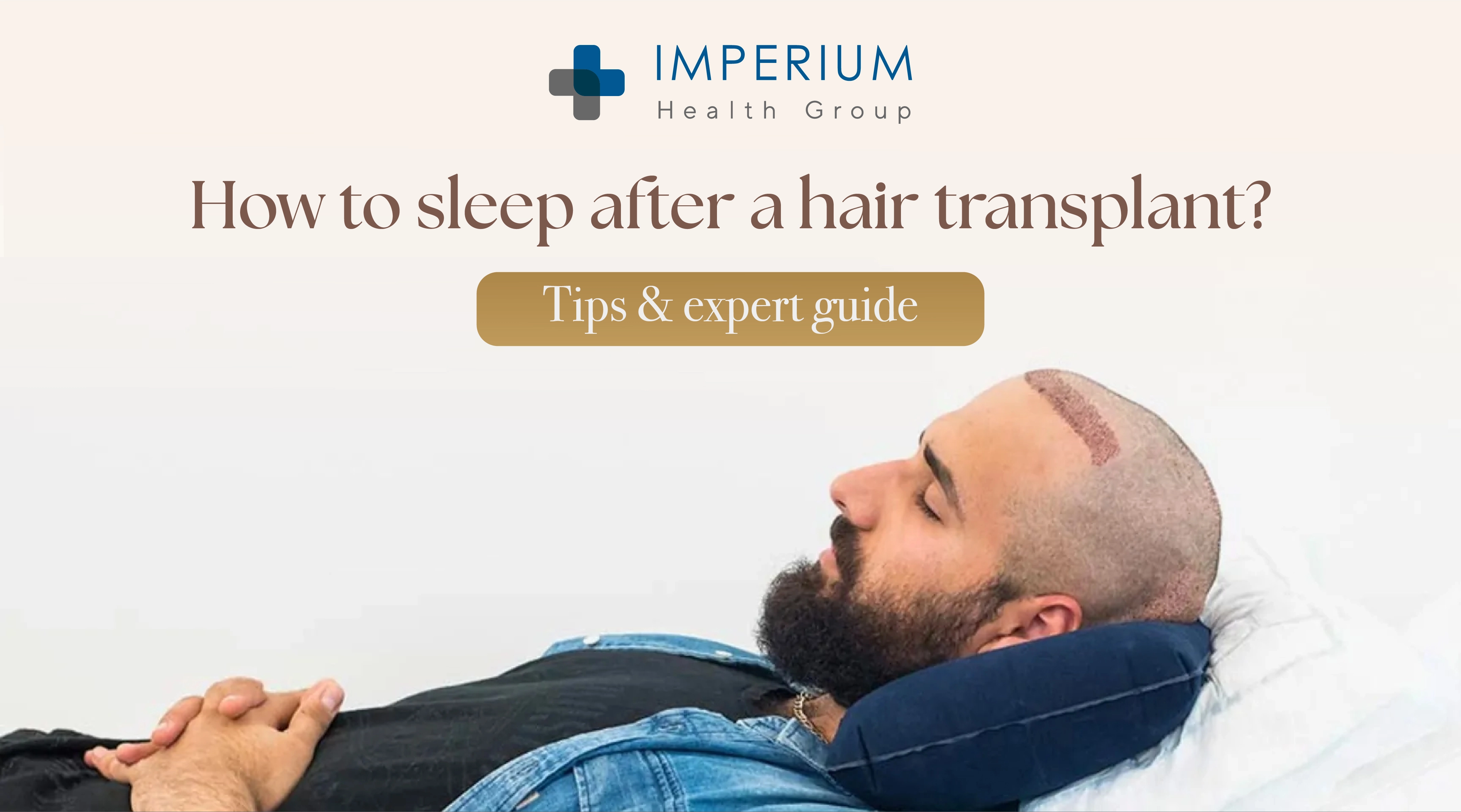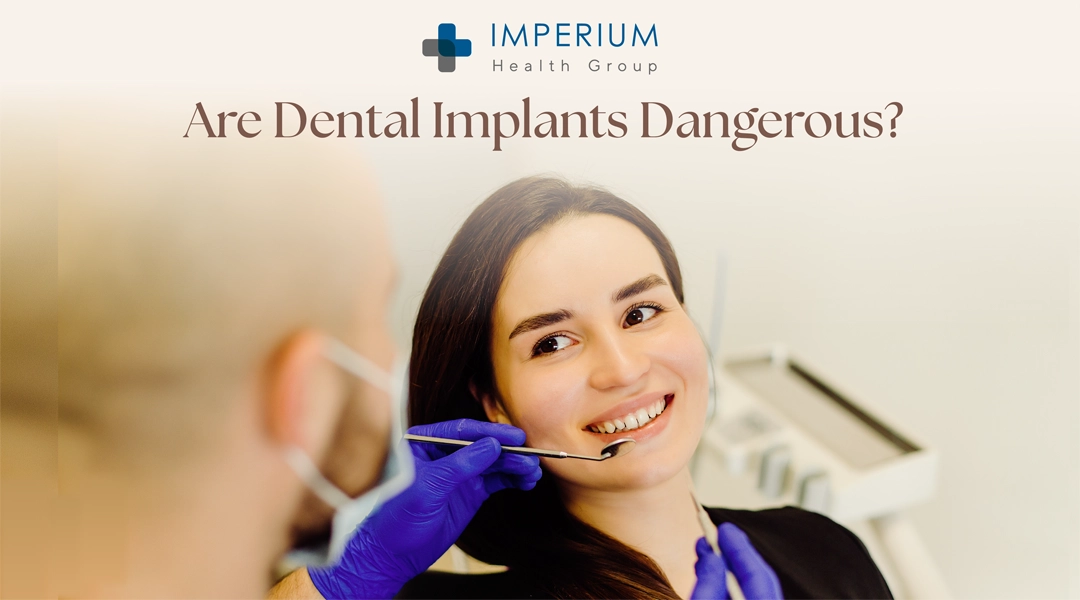How to Sleep After A Hair Transplant?
19/06/2025

How to Sleep After a Hair Transplant | Tips & Expert Guide
Learn how to sleep after a hair transplant with easy post-care tips, safe sleeping positions, and expert advice to protect your new hair and promote faster healing!
Introduction
Hair transplant surgeries have revolutionized cosmetic procedures, with men accounting for 87.3% of patients according to a survey by the International Society of Hair Restoration Surgery (ISHRS). A common question patients ask is: “How do I sleep after my hair transplant procedure?”
We consulted leading specialists partnered with Imperium Health Group to bring you a comprehensive guide on how to sleep after a hair transplant for optimal recovery.
How to Sleep After a Hair Transplant: Guide for Faster Recovery
The Neck Pillow
Using a high-quality neck pillow is key to staying comfortable and minimizing head movement during sleep. Place the neck pillow on your regular bed pillow to find a position that suits you best. Experts recommend using a neck pillow for the first 10 days post-surgery to protect your grafts.
Best Positions to Sleep in After a Hair Transplant
The ideal sleeping position to avoid damaging your grafts is on your back with your head elevated above heart level. This can be achieved by placing a neck pillow on your regular pillow for maximum comfort. Elevating your head also helps reduce inflammation and prevents scalp irritation.
For the first 2 weeks, maintain this upright position to minimize risks. After this period, you can gradually return to sleeping in other positions as the grafts become more secure.
Post-Care Tips After a Hair Transplant
To ensure a smooth recovery, follow these precautions:
Day 1–4: This is a critical healing period. Avoid exercise or strenuous activities, maintain a balanced diet, prioritize sleep, and keep the transplant area clean using the aftercare kit provided by our partner clinics.
Day 5–9: Begin gently washing your scalp without shampoo. Avoid picking at scabs or flaky skin, even if itchy, to prevent complications.
Day 10–14: You’ll likely feel more comfortable during this phase. Your transplanted hair may fall out as follicles enter a dormant phase, making way for new, healthy hair growth. Resume normal hair washing with your physician’s approval.
Why Sleep Is Important After a Hair Transplant
Sleep is vital for recovery after any surgical procedure, including hair transplants. Adequate rest supports healing and helps you avoid strenuous movements that could harm the grafts. Sleeping correctly, especially in the first few days, is critical to prevent complications. Follow the recommended positions and precautions to ensure a smooth recovery.
When Can You Sleep Normally After an FUE Hair Transplant?
Proper sleeping positions are essential to protect grafts, particularly in the first 14 days when follicles are securing themselves:
Day 1–4: Sleep on your back with a neck pillow to keep your head elevated.
Day 5–10: You can adopt slightly more relaxed positions, but sleeping upright is still recommended for safety.
Day 14 onwards: You can generally sleep in any position, though experts advise avoiding direct pressure on the transplant site as a precaution.
Additional Advice for Better Sleep After a Hair Transplant
The healing period is critical, and adhering to your doctor’s instructions ensures a safe recovery. Post-procedure oozing is normal, but consult a physician if you experience severe pain.
Itchiness and scabs are common but should not be scratched or picked, as this increases the risk of folliculitis (infection). Use saline spray or antihistamines to alleviate discomfort, and allow scabs to fall off naturally.
New hair growth typically begins 2 months post-procedure, so continue following safety measures until this time for optimal results.
FAQs
Can I sleep in a recliner instead of a bed after a hair transplant?
Yes, sleeping in a recliner is highly recommended for the first few nights to keep your head elevated, reduce swelling, and protect grafts from pressure or accidental contact.
What happens if I wake up and find I’ve rolled onto the transplanted area?
Accidentally rolling onto the transplanted area may dislodge grafts, especially within the first 3 days. Monitor for bleeding or pain and contact your surgeon if you’re concerned.
How do I sleep safely if I move a lot during sleep?
Use multiple pillows or a recliner to keep your head elevated. A travel neck pillow can prevent rolling, and placing cushions at your sides can limit movement during sleep.
Is there a difference in sleep position advice for FUT vs. FUE transplants?
Yes, FUT patients should avoid pressure on the back of the head due to the linear scar, while FUE patients should focus on protecting the grafted area, typically on the top or front.
What’s the best sleep posture if both the crown and hairline were transplanted?
Sleep upright at a 45-degree angle in a recliner or propped up with pillows to avoid pressure on either the crown or hairline.
What is the best shampoo after a hair transplant?
Consult your surgeon for recommendations on medicated shampoos suitable for post-transplant care.
Related Blogs

Are Dental Implants Dangerous?

The Most Popular Plastic Surgeries According to Doctors